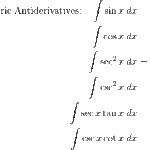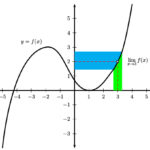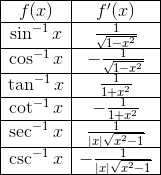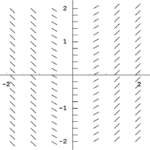Introduction
Good morning/afternoon/evening APUSH (Advanced Placement United States History) students! May Test Day is coming up fast, and I know you’re looking for every advantage possible in order to succeed. Well, you’ve clicked on the right article.

First, let me introduce myself beyond the short biography at the end of this article. I took APUSH my junior year of high school (2002-2003), and scored a 5 on the exam. In the summer of 2014 I became certified to teach APUSH after taking an intense professional development training offered by the College Board. It is my goal in this article to pass on the wisdom I gained as a student and teacher so that you can do your best on test day!
As this article is long, here is a handy-dandy table of contents:
- How You’re Assessed on the Exam
- Successful Time Management
- Test Content: Section I
- Multiple-Choice Questions
- Short-Answer Questions
- Test Content: Section II
- Document-Based Question
- Long Essay Question
- When All Is Said and Done
How You’re Assessed on the AP U.S. History Exam
Through multiple choice questions, short-answer questions, a document-based question, and the long essay question, the APUSH exam is measuring the following knowledge and skill sets:
- Historical thinking skills:
- Compare/Contrast/Analyze Cause and Effect
- Analyze/Evaluate historical patterns.
- Evaluate multiple perspectives on a single event/era.
- Evaluate how specific events reflect the era.
- Write interpretations of historical events using various evidence.
- Evaluate bias in historians’ perspectives.
- Synthesize various evidence to create an original understanding of the past.
- Knowledge about the nine periods of U.S. History:
- 1: 1491-1607 (The Americas Before Europeans)
- 2: 1607-1754 (European Colonization)
- 3: 1754-1800 (Breaking with Britain, the Revolutionary War, and Creating a National Identity)
- 4: 1800-1848 (Growth of the United States)
- 5: 1844-1877 (Sectionalism, Civil War, and Reconstruction)
- 6: 1865-1898 (Industrial Revolution and Social Changes)
- 7: 1890-1945 (Growth of the U.S. as a World Power)
- 8: 1945-1980 (Post-War Leadership and Civil Rights)
- 9: 1980-Present (U.S. Transition to the New Century)
- Your ability to write one essay (either the Document-Based Question or the Long Essay) that examines multiple time periods and the long-term developments that occurred within.
Successful Time Management
In this section I will break down the length of the APUSH exam, and offer suggestions on how to make sure you successfully finish each section of the test. First a piece of recycled advice from my ACT articles: take multiple timed practice tests to become used to the APUSH Exam’s format, content, and pacing.
Section I: Multiple Choice (55 Questions, 55 Minutes, 40% of Total Exam Score)
If you’ve studied the art of time management for the ACT (or any other standardized test), you’ll be in a good position to successfully finish the APUSH multiple choice section. With one minute per question, you can easily track your time throughout the test.
Section I: Short-Answer Questions (4 Questions, 50 Minutes, 20% of Total Exam Score)
As the Math tells us, you have 12 minutes and 30 seconds per short-answer question. Though 12.5 minutes for a ‘short’ question sounds like more than enough time, there’s a lot you’ll need to do to be successful on these questions. More on this in a little bit.
Break (10 Minutes)
Besides visiting the restroom and water fountain during the break, plan to bring a snack with you. Section II requires a lot of brain power, so chowing down on some slow-release energy like almonds will give you a well-needed boost.
Section II: Document-Based Question (1 Question, 55 Minutes, 25% of Total Exam Score) and Long Essay Question (1 Question, 35 Minutes, 15% of Total Exam Score)
The second part of the APUSH Exam is a 90-minute marathon consisting of two parts. Most students feel the time crunch in this section. Why? Because there is no pause between the Document-Based Question and Long Essay Question, many students spend too long on the Document-Based Question. Even for students with an encyclopedic knowledge of U.S. history and college-level writing skills, a rushed Long Essay response can mean the difference between a 5 and 4 score.
Like other timed writing tests, both being aware of your time and planning can solve a lot of time management issues. Here are some tips you can use on test day.
- Use the first 15 minutes of your Document-Based Question to read/plan.
- Use the first 5 minutes of your Long Essay to do the same as above.
- Once you’ve selected evidence, DON’T ADD MORE halfway through your essay. That will eat up more time. Substitution for a stronger piece of evidence is fine.
- Set aside the last five minutes of both essays as a ‘wrap-up’ time.
APUSH Test Content: Section I (Multiple Choice and Short Answer)
Now that we’ve talked about time management, let’s discuss the tests’ content.
Multiple-Choice
If you have a good APUSH teacher, he/she will have used old APUSH multiple-choice questions on your unit tests. Though the Exam you take in May will be different, practicing old questions will nonetheless prepare you for the difficulty level you will see on test day.
As for the test itself, here’s what to expect. The fifty-five questions are grouped into sets of two to five questions. For each set you will be asked to respond to some material (political cartoon, quote, picture etc.) and use that material along with your own knowledge to answer the questions.
In a way, APUSH multiple-choice questions are like a puzzle with only two pieces. The Exam provides the first piece. In the end, though, the knowledge you have accumulated over the last year is required to finish the puzzle and correctly answer the questions.
Short-Answer

Though the word ‘short’ is in the title, the four short-answer questions ask you to do a lot in 50 minutes.
Each short-answer question will present you will information to use in crafting your response. This information includes, but is not limited to the following:
- Primary Source
- Historian’s Argument
- Data (such as a graph/chart) or Map
- A proposition about U.S. History created by the test writer.
Using this information, you will be asked to use your historical thinking skills to answer each question. Also, the individuals who will read your replies want to see that you are both identifying and analyzing this information in your reply, along with presenting your own ideas.
Finally, two out of the four questions will allow you some measure of choice in replying, so make sure to read the directions carefully before starting to write your answer.
APUSH Test Content: Section II: Document-Based Question and Long Essay
Document-Based Question
Though only a single question, the Document-Based Question (DBQ) will ask you to do many tasks simultaneously.
The test will advise you to spend 15 minutes planning and 45 minutes writing. As planning is the most important step in DBQ success, let’s spend some time focusing just on it.
Planning
The first thing to do is read the directions and prompt! The directions will require that your essay accomplish approximately seven things to be successful, and that doesn’t include what the prompt will ask you to do.
As you go through the directions/prompt, underline the main tasks you will need to accomplish in your reply. If it helps, simplify them in your words by writing on the test booklet.
Once you have a clear idea of what you have to do, begin reading the documents. Have your pencil ready to mark relevant information you can use in your essay.
The last step in planning is most important. Graph/chart/outline your response. Make sure that you are following each of the required steps. For example, an easy trap many students fall into is using less than the required number of documents in their replies.
Long Essay Question
The long essay question will give you a choice between two prompts set in different historical eras. First, a no-brainer: choose the one you feel most comfortable answering. And once you’ve made your choice, don’t go back. You don’t have time for it.
The Long Essay Question will ask you to support, modify, or refute an historical viewpoint. The key to success on this part of the APUSH Exam is to have a clear, well-defined thesis statement that chooses one of these options. A good thesis is like a target: the reader will be able to know right away if you’ve hit center with your evidence and interpretation. If your thesis is muddy, no matter how well you write, or how good your evidence, your reader will have no idea where your essay really attempts to go.
Once you’ve written your thesis, have two goals in mind for your essay to accomplish:
- Addresses patterns of change over time.
- Makes an historical argument.
These are the two things that Long Essay readers need to see if they’re going to give your essay a high score. They really don’t care if you know everything about American history. Your knowledge was already measured during the Multiple-Choice section. The long essay is about tying it all together: knowledge and skills.
There’s one last thing to note about the Long Essay. Compared to the DBQ, there are no detailed instructions. The format/evidence/etc.: it’s all up to you. In this way the Long Essay most closely reflects a test essay you might see in a college-level history course.
When All Is Said and Done
Before you know it, the test will be over, and you’ll stumble outside wondering how morning turned into afternoon. After the mental fog clears, there will probably be only one question on your mind. Here’s the answer:
Yep, it takes about two months to score your exam. The multiple-choice answer sheet goes through the scanner, but the essays are another story. Imagine a high school gymnasium full of teachers reading stacks of essays – that’s what it’s like.
So you get you score, and it’s a number between 1 and 5…and that’s it. If APUSH is your first AP course, you might be shocked to learn how simple the final score actually is. There’s no in-depth analysis of your strengths and weaknesses, no comments from your essay readers. Just a number.
If you earn a 4 or 5, you probably won’t care about the lack of information, but if a 1, 2, or 3 is in your future, you’re going to wonder (and probably feel sad/angry) about what happened. My advice, take it or leave it, is to use the summer to mourn and move on. Don’t abandon your plans to take AP courses in your senior year of high school, either. Your college applications will still shine because you’re enrolled in AP.
Don’t fret too much about the future, APUSH scholars. Though April will come and go before you know it, use this final month time to review material, take practice tests, and strengthen your weaknesses. Good luck!





